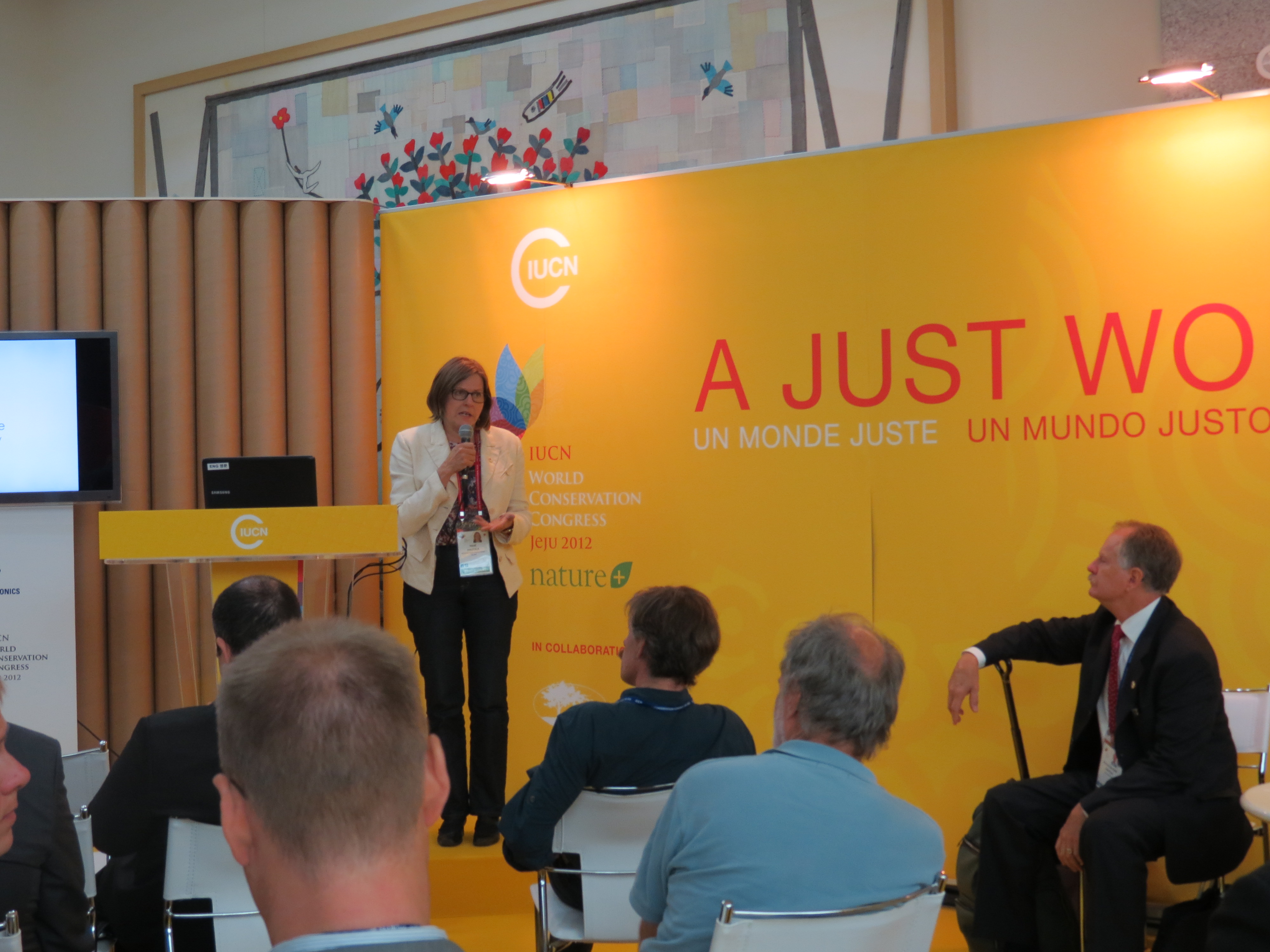It is the second day of the IUCN World Conservation Congress, and this afternoon, I chaired a session in the One World Pavilion about forest governance in Europe. Rather a challenge for me, as I am not a forester, but my colleague Richard Aishton, who is the IUCN coordinator of the Eastern European forest governance programme (ENPI-FLEG) had helped to put some thoughts on paper.
Finnish Minister for International Development and Ownership Steering Issues, Ms Heidi Hautala joined us for the first part of the session, which focused on forest governance in Finland. I was keen to provide my support to this session, as it describes a new relationship between IUCN and UPM Kymmene – a large, international wood, paper and pulp company from Finland, which is moving into bio-energy, and therefore faced with question of supply, management and impact on nature. Our due diligence gave us no reasons for concern, and we are currently in the process of identifying what IUCN and UPM can do together in the coming years, with the involvement of Finnish Commission experts and IUCN Members.
Minister Hautala stressed the need for long term secure tenure, for transparency and access to information and for integration of different land uses and key players along the value chain. She explained that good forest governance and cooperation between stakeholders will reduce the need for law enforcement.
As minister for International Development, her interest also included an international dimension, and she stressed the need to ensure that we do not lower our standards when dealing with countries in other parts of the world, and that we take care of people’s rights. We need partner countries with tropical forests to help Europe with carbon sequestration, and we need to cooperate with them to stop loss of forest cover.
Finally, she called for inclusive “green growth” where different groups share the responsibilities and create opportunities for sustainable development.
I then introduced Petri Heinonen from UPM Kymmene who told us about their biodiversity conservation strategy and how it relates to forest governance in Europe. He pointed out that their strategy is based on 6 principles:
- Protect native tree species as they are the keystone to the forest
- Leave dead wood for beetles and other species that thrive on dead wood
- Protect valuable habitats for specialised species
- Maintain a varied forest structure
- Protect water resources
- To logging in natural forest patches
Petri showed a number of very interesting biodiversity promotion case studies, including controlled burning, a grassland bird project in Uruguay, a black grouse project in UK and a fungi study in USA: He also mentioned that UPM is actively restoring peatbogs, which reminded me of the workshop I attended yesterday, which showed the findings of the IUCN UK peatland programme.
Minister Hautala concluded by reminding us that we need to work with companies if we want to change the way in which nature is being managed. She recognised the role of civil society as watchdogs and catalysts, but stressed that we need all three partners – government, NGOs and companies – to work together if we want to make a difference.
After this very Finnish session, we changed our attention further south and east and reflected on forest governance issues in the Southern Caucasus. Unfortunately, I had to leave as an IUCN membership issue came up that required my attention.



0 comments
Write a comment